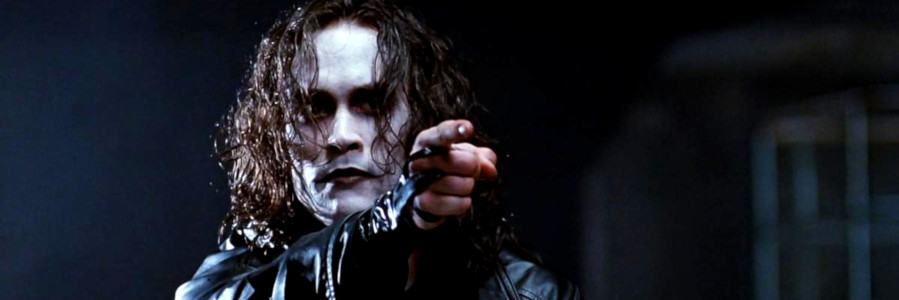In the horror-themed role-playing game Vampire: the Masquerade, as well as many other incarnations of the vampire mythos, immortal characters are torn between two competing forces: their innate thirst for power and destruction, and the social morays which tie them to their humanity.
The Beast, that inner driver of a vampire’s most basic instincts—namely to feed and survive, both at all costs—is the raw, uninhibited destructive force which lets them live for decades if not centuries. If a vampire falls under its total control, they become a neigh-mindless killing machine, focused only on the direction of its next meal and a safe place to wait out the sun. Any trace of civility, higher intelligence, or sociability goes right out the window in an endless quest for more food.
The regular and careful adherence to rigid codes of morality can help stave off the Beast, or at least delay its eternal control. For most vampires, the ideas of right and wrong most closely associated with their mortal life are the most accessible and the most familiar. Stealing is bad, hurting someone is more bad, killing someone is worse, et cetera. Whereas we—even out of the fictional game setting—know many examples of people who rationalize away these “traditional” moral virtues, every time a vampire has a moral failing, the Beast takes a little more control, grows a little stronger.
When there is an insidious and conniving animal intelligence inside you, there are no “safe” ways to make moral exceptions. If the justification for sealing from someone is that they are a “bad person” and stole the goods in the first place, before long the definition of “bad person” will expand so broadly as to not make the character think twice about robbing everyone they see. The example of physical violence is even more straightforward; once a character accepts that hurting a person for X reason is okay—be that they’re a murderer, or they’re in the act of hurting others, or whatnot—that Beast will claw and tear until almost every imagined provocation is an excuse for violence, for it to take control and do what it does best.
Vampires then have to be more vigilant about their actions, thoughts, and conduct, than mortals. While human morality is something of a foggy continuum, a vampire must constantly set and reinforce lines in the sand across which they will not step—for now. It’s not fair to say that the Beast always wins, but in all honesty it’s a matter of eventuality; on a long enough timeline, no vampire survives with their humanity intact.
Rather than use the concept of sinking morality as an excuse to portray terrible monsters, I have long encouraged players to see it as a source of rich story, the struggle against an incomprehensibly powerful foe—a very good allegory for the rest of Vampire, in my opinion. Vampires, which prey on mortals and almost objectively have to assault them in order to feed, are striving to maintain some semblance of human morals without letting those exceptions grow to encompass the whole of one’s perspective. From my experience, that descent—or even rarely the difficulty-wrought attempt to regain that which was lost—makes for a very engrossing character story.
As a storyteller or game runner, there are many opportunities to show players this concept, as well as give them choices about the road their character follows. Do they stop the mugging in the alley, sacrificing some of themselves for a momentary good deed? Do they attempt to decry and belittle those who have lost their humanity while secretly longing for the alien freedom those monsters represent? Does someone dive headlong into what it is to be a vampire—to unintentionally seek out the Beast—and only at the precipice realize the terrible course they’ve set? To reiterate, the story possibilities are endless. In a game like Vampire where so much of the overarching plot is about striving against the seemingly inevitable, I believe very personal stories can emerge that truly define a character, and an entire gaming chronicle.
Many years ago there was a character in a local Vampire game named Betty Thomas. Turned into a vampire for the express purpose of destroying her sire’s enemies, she spent many decades wading through their figurative and literal viscera. Her story, and her struggle, truly began when she realized she didn’t have to be a weapon, and started to reverse the disastrous road she had been set upon. While externally appearing to be an idealized 1950s housewife, cherry-print dresses and all, internally she constantly battled with the high-level desire to become a better individual, and the underlying experience that savagery was not only successful, but fun for her.
During an emotionally-charged evening where a romantically-entwined ally was under direct threat, all of her deadly senses were primed to sense new opponents and new dangers. A cocky and unassuming courier opened the door to the vampires’ meeting room, and announced he had a message for Ms. Thomas, from “an old friend.”
Upon seeing the name of her sire on the letter, Betty’s eyes turned red as the Beast took over—obviously, to her, this was an agent of her poisonous creator, and that they arrived on the same night as her other woes couldn’t have been coincidence. With preternatural speed she drew a long, wooden stake—so iconically effective against vampires—and stabbed it straight through the courier’s chest, knowing in her heart of hearts that he was an enemy she would have to question later.
Unfortunately for Betty Thomas’ higher reasoning and self-image, the courier was not an immortal scion of a dark and mysterious force—he was literally a simple package courier, sent on an errand. Completely human, he gasped and coughed up a disgusting blood-gurgle as the stake entered his heart, and he fell dead at her feet.
Screaming with horror at what she had done, Betty collapsed to the floor and began shaking, her rational-thinking mind taking over from the instinctive and reactive Beast that had so easily flamed her anger and her suspicions. Even though the death was accidental, she knew that she had not only wished harm upon the individual, but that she allowed herself to become the instrument of that harm. The courier’s death was solely on her, and no matter how she could or would try to justify the violence to herself later, she knew the Beast had grown just a little bit stronger that night, and that her carefully-cultivated self-control slipped just that much farther away.
Regardless of setting or genre, a character’s emotions are my favorite avenue with which to present a story. In games like Vampire where morality not only imparts a subjective pressure on how a character should act but also an objective, rules-based one, the idea of what a character accepts as “okay,” even if just this once—it never is—drives some of my most memorable and hopefully impactful moments of running chronicles.
Header image taken from 1994’s genre-defining film, The Crow, based on the 1989 comic of the same name. The story’s cult success helped give rise to the proliferation of horror themes across all forms of media, including being a founding inspiration for the game Vampire: the Masquerade.















